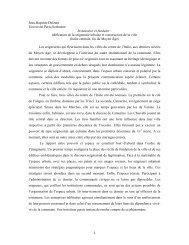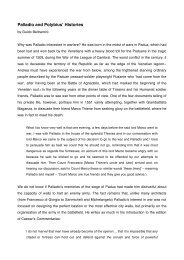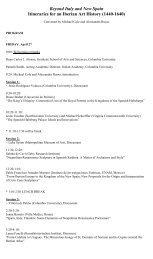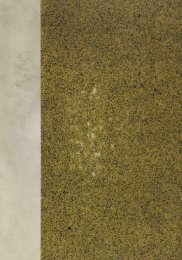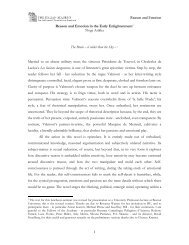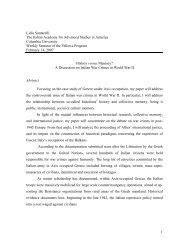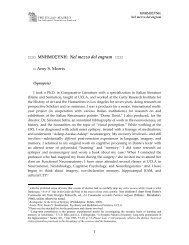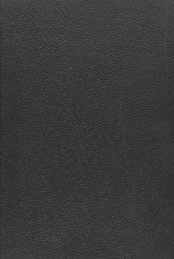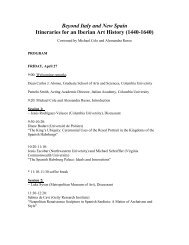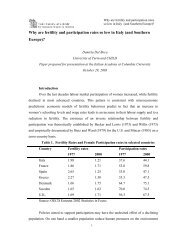2011-2012 - The Italian Academy - Columbia University
2011-2012 - The Italian Academy - Columbia University
2011-2012 - The Italian Academy - Columbia University
Create successful ePaper yourself
Turn your PDF publications into a flip-book with our unique Google optimized e-Paper software.
spectrum in the U.S., Spain, Italy, and elsewhere in Europe as well<br />
as in Latin America. No more striking testimony to the influence of<br />
<strong>Italian</strong> culture could have been demonstrated both by the subject of<br />
the conference and by the intensity of the discussions it generated.<br />
In short, no event at the <strong>Academy</strong> this year was anything but<br />
well attended—usually a sell-out audience—and enthusiastically<br />
received.<br />
One of the best ways of getting a sense of the myriad activities of<br />
the <strong>Academy</strong> is through our website, which not only provides much<br />
information about our programs and events, but also contains a large<br />
selection of videos of speakers and performers at <strong>Academy</strong> events (as<br />
well as postings to the public video-hosting platform Vimeo).<br />
Amongst our many collaborative projects with <strong>Columbia</strong> and<br />
other institutions I should mention APIA—the Academies Project at<br />
the <strong>Italian</strong> <strong>Academy</strong>—which has as its aim the complete digitalization<br />
of books devoted to the history of Academies (in which Italy<br />
played a more central role than any other European country). APIA<br />
is a collaborative project with the Warburg Institute in London, the<br />
Institut de France and a number of other European and American institutions<br />
(including, of course, <strong>Columbia</strong>’s outstanding Rare Books<br />
Library), and has been partly funded by grants from the Kress Foundation,<br />
to whom, as always, the <strong>Academy</strong> is most grateful. Marcello<br />
Simonetta and Noga Arikha have worked with great innovativeness<br />
and energy on this project, in collaboration with Abigail Asher.<br />
<strong>The</strong> Art and Neuroscience project continues to be a model for<br />
groundbreaking work in this ever-more flourishing cross-disciplinary<br />
field. It is to be hoped that <strong>Columbia</strong> as a whole, following the<br />
model we set up over ten years ago, will soon adopt an undergraduate<br />
and graduate program along the lines we have pioneered.<br />
This year we laid the groundwork for a new <strong>Academy</strong> project,<br />
organized in conjunction with the Heyman Center for the Humanities<br />
at <strong>Columbia</strong>, under the direction of Professor Mark Mazower, on<br />
Law and its Manifestations. It will support research and seminars on<br />
themes that range from law and its images to questions of natural<br />
law and justice, and will involve a number of universities in Germany,<br />
Italy and France (so far).<br />
| 18




